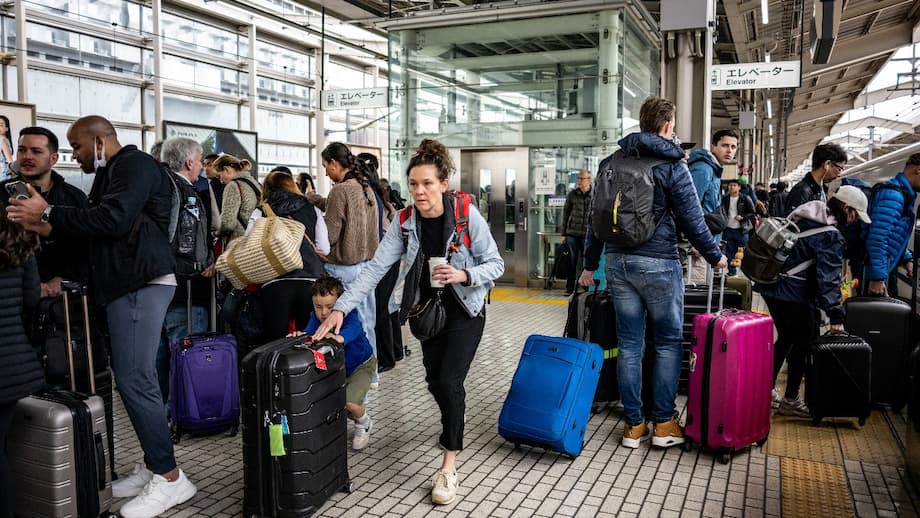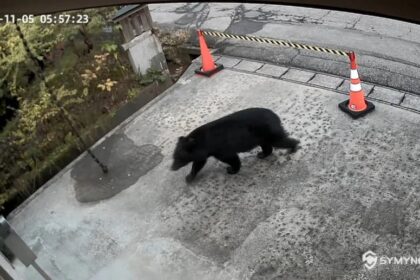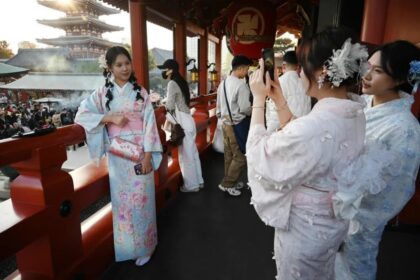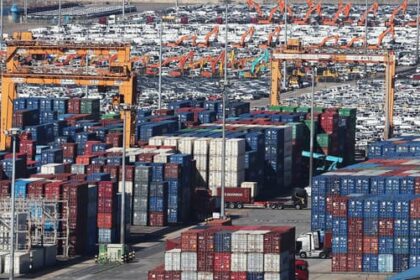Japan’s Task Force on Foreigners: A Response to Election-Year Anxiety
As Japan approaches a pivotal national election, the government has launched a new task force aimed at managing issues related to foreigners. This move comes amid rising public anxiety over immigration, surging tourism, and the growing presence of foreign residents. The formation of the Office for the Promotion of a Society of Harmonious Coexistence with Foreign Nationals—announced by Prime Minister Shigeru Ishiba—reflects both the country’s demographic challenges and the heated political climate, where nativist rhetoric is gaining traction.
- Japan’s Task Force on Foreigners: A Response to Election-Year Anxiety
- Why Now? The Political and Social Backdrop
- Japan’s Demographic Dilemma: Aging, Shrinking, and the Role of Foreigners
- Public Perceptions and Political Rhetoric: Fact vs. Fear
- The Task Force: Mandate, Measures, and Criticism
- Sanseito and the Mainstreaming of Anti-Immigration Politics
- Comparisons with Global Trends: Japan and the Rise of Nativism
- Economic Stakes: Can Japan Afford to Close the Door?
- Looking Ahead: The Election and Beyond
- In Summary
While Japan has long maintained strict immigration policies and a strong sense of cultural homogeneity, recent years have seen a gradual opening to foreign workers and tourists. Yet, as the number of non-Japanese residents and visitors climbs, so too does public debate about their impact on society, the economy, and national identity. The new task force is both a policy response and a political signal as parties vie for votes in a closely contested election.
Why Now? The Political and Social Backdrop
The timing of the task force’s creation is no coincidence. Immigration and the presence of foreigners have become central issues in the run-up to the upper house election, fueled by the rise of the Sanseito party—a right-wing, anti-immigration movement that has brought once-fringe rhetoric into the mainstream. Sanseito’s “Japanese First” campaign, inspired in part by the nativist politics of former U.S. President Donald Trump, has resonated with voters frustrated by economic stagnation, a weak yen, and the visible influx of tourists and foreign workers.
Prime Minister Ishiba’s ruling Liberal Democratic Party (LDP) and its coalition partner Komeito are facing mounting pressure. Last year, they lost their majority in the lower house for the first time in 15 years. Polls suggest they could lose their upper house majority as well, with Sanseito projected to win 10 to 15 seats—enough to erode the government’s already shaky grip on power.
Sanseito’s leader, Sohei Kamiya, has openly courted voters with promises to clamp down on illegal immigration and prioritize Japanese citizens in welfare and employment. The party’s online presence is formidable, boasting more YouTube followers than any other Japanese political party. Its appeal skews toward younger men, but efforts are underway to broaden its base, including fielding female candidates and softening some of its more controversial positions.
Japan’s Demographic Dilemma: Aging, Shrinking, and the Role of Foreigners
Japan’s population is aging rapidly and shrinking at an unprecedented rate. The birth rate hit a record low of 1.15 in 2024, far below the 2.1 needed to maintain a stable population without immigration. As a result, the working-age population is declining, threatening the country’s economic vitality and the sustainability of its social welfare systems.
To address labor shortages, Japan has gradually loosened its immigration rules, especially for “specific skilled workers” in industries like nursing, hospitality, construction, and aviation. The number of foreign employees reached a record 2.3 million in October 2024, and the total foreign resident population has grown from 2.23 million to 3.8 million over the past decade. Still, foreigners make up only about 3% of Japan’s total population—much lower than in most Western countries.
Tourism has also boomed, with a record 21.5 million foreign visitors in the first half of this year alone, making Japan the most-visited country in Asia and the eighth most-visited globally. While this influx has provided a much-needed economic boost, it has also sparked complaints from residents about overcrowding, rising prices, and disruptions to daily life.
Public Perceptions and Political Rhetoric: Fact vs. Fear
Despite the relatively small proportion of foreigners in Japan, public anxiety has grown. Some residents blame tourists for inflation and shortages of staples like rice, while others accuse foreign workers of taking jobs from Japanese citizens or abusing social welfare systems. Concerns have also been raised about foreigners buying up real estate and driving up property prices.
However, experts say many of these fears are exaggerated or unfounded. Shunsuke Tanabe, a sociology professor at Waseda University, points out that crime rates in Japan have actually declined over the past 20 years, even as the number of foreigners has increased. In 2023, foreigners accounted for just 5.3% of arrests—a figure in line with their share of the population. “There is virtually no difference between Japanese nationals and foreign nationals in terms of crime rates,” Tanabe told CNN.
“There are visibly more foreigners around; they start to assume that public safety must be getting worse, too. As a result, negative campaigns spread on social media resonate with many, leading them to think that parties promising to ‘protect’ society from these imagined threats are the better choice.”
Political analysts argue that parties like Sanseito are capitalizing on these misconceptions to win votes, using social media to amplify fears and position themselves as defenders of Japanese culture and security.
The Task Force: Mandate, Measures, and Criticism
The new Office for the Promotion of a Society of Harmonious Coexistence with Foreign Nationals is intended as a “command center” to coordinate policies affecting both Japanese citizens and foreigners. Its mandate includes:
- Immigration policy and visa regulations
- Land acquisitions by foreigners
- Unpaid social insurance and medical bills
- Public order and crime prevention
Prime Minister Ishiba has pledged to “take strict action against those who do not follow the rules,” and the government is considering measures such as banning tourists and foreign residents with unpaid medical bills from obtaining or renewing visas. There are also proposals to tighten requirements for foreigners switching to Japanese driver’s licenses and purchasing real estate.
Supporters argue that these steps are necessary to address legitimate concerns and maintain social harmony. Critics, however, warn that such policies risk making foreigners feel unwelcome and could harm Japan’s ability to attract the workers and tourists it desperately needs. Jeffrey Hall, a Japanese studies lecturer at Kanda University, cautions that “if Japan becomes a society that strictly monitors foreigners to the point where they feel unwelcome, it could have a damaging effect on the ability of businesses to get the foreign workers they need.”
Sanseito and the Mainstreaming of Anti-Immigration Politics
The rise of Sanseito marks a significant shift in Japanese politics. Once confined to the political fringe, anti-immigration sentiment is now a central election issue. Sanseito’s platform combines calls for stricter immigration controls with broader nationalist themes: preserving traditional culture, boosting agricultural self-sufficiency, and resisting globalization. The party has also opposed vaccines, LGBT rights, and nuclear power, positioning itself as a defender of “true Japanese spirit.”
At a recent press conference, Sohei Kamiya framed the party’s stance as a matter of national protection rather than exclusion. He argued for tougher policing and regulation of foreigners, citing concerns about legal loopholes and crime. Yet, he insisted that Sanseito does not seek to exclude legal foreign workers who contribute to society.
“We are not in any way intending to exclude foreign workers who are here legally, who are working legally side by side with the Japanese, with jobs.”
Sanseito’s economic policies also reflect a populist bent, with promises to cut taxes and increase child benefits. The party’s emphasis on agricultural self-sufficiency—especially rice production—taps into deep-seated anxieties about food security and national identity. Kamiya has warned against importing American rice, arguing that it would devastate Japanese farmers and undermine the country’s sovereignty.
Comparisons with Global Trends: Japan and the Rise of Nativism
Japan’s current debate over immigration and national identity echoes similar trends in the United States and Europe, where far-right parties have gained ground by stoking fears about foreigners and promising to put citizens first. Sanseito’s rhetoric and tactics—heavy use of social media, appeals to economic insecurity, and warnings about cultural erosion—mirror those of parties like Germany’s Alternative for Germany (AfD) and the UK’s Reform party.
However, Japan’s situation is unique in several respects. The proportion of foreigners remains low, and the country’s demographic crisis is far more acute than in most Western nations. While the U.S. and Europe have long histories of immigration and multiculturalism, Japan’s self-image as a homogeneous society makes the integration of foreigners a particularly sensitive issue.
Historically, Japan has oscillated between periods of openness and isolation. During World War II, for example, Japanese immigrants in the U.S. faced internment and discrimination under laws like the Alien Enemies Act. Today, the challenge is not exclusion but adaptation: how to balance the need for foreign labor and international engagement with concerns about social cohesion and national identity.
Economic Stakes: Can Japan Afford to Close the Door?
Experts warn that pulling up the drawbridge on immigration could exacerbate Japan’s demographic crisis and jeopardize its economic future. The country’s workforce is shrinking, and many industries—especially elder care, agriculture, and hospitality—depend on foreign workers to fill labor gaps. Tourism, too, is a major source of revenue, and alienating visitors could have serious consequences for local economies.
To remain competitive and sustain growth, Japan will need to find ways to attract and integrate foreigners while addressing legitimate concerns about public order and social services. This will require not only effective policy but also a shift in public attitudes—away from fear and suspicion, and toward acceptance and coexistence.
Looking Ahead: The Election and Beyond
The outcome of the upcoming election will shape Japan’s approach to immigration and foreign residents for years to come. If Sanseito and other anti-immigration parties continue to gain ground, the government may feel compelled to adopt even tougher measures. Conversely, a backlash against nativist rhetoric could prompt a reassessment of how best to manage demographic change and economic needs.
Prime Minister Ishiba has acknowledged the importance of remaining open-minded, stating that “it is essential for us to incorporate the vitality of the international community, through the acceptance of a certain number of foreign workers and the expansion of inbound tourism, to ensure a smooth transition to a growth-oriented economy.” The challenge will be to translate this vision into policies that balance security, prosperity, and social harmony.
In Summary
- Japan has launched a new government task force to address issues related to foreigners, amid rising public anxiety and election-year politics.
- The move comes as anti-immigration rhetoric gains traction, with the Sanseito party making significant inroads by promising to put Japanese citizens first.
- Japan faces a demographic crisis, with a shrinking and aging population driving the need for foreign workers and tourists.
- Public fears about crime, welfare, and cultural change are often exaggerated, but have become central to political debate.
- The new task force’s mandate includes immigration policy, land acquisitions, and public order, but critics warn it could make foreigners feel unwelcome and harm the economy.
- Japan’s experience reflects broader global trends, but its unique demographic and cultural context poses distinct challenges.
- The outcome of the upcoming election will determine whether Japan moves toward greater openness or increased isolation.












